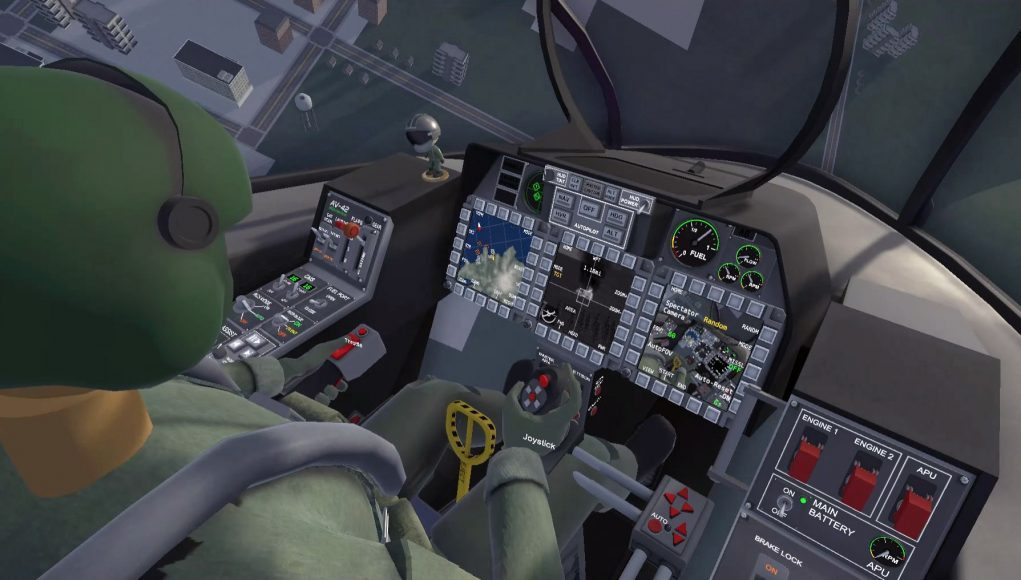Development Continues Rapidly
Developing a unique VR flight simulator is an ambitious undertaking for a one-man team, but indie developer Paolo Encarnacion is evidently up to the challenge, having already demonstrated his talents as the creator of the popular ‘BDArmory’ mod for Kerbal Space Program (2015). Encarnacion says the majority of systems in VTOL VR were written from scratch, but “a lot of the weapon systems and AI pilot tech came from BDArmory, but with major improvements.”
The focus on this unusual form of aircraft happened organically during the prototyping phase.
“When I got an HTC Vive, I was impressed by how accurately the controllers were being tracked and wanted to see if I could use them as flight controls in a virtual cockpit,” he recalls. “Since I was prototyping a vehicle in a very small environment, it had to be a VTOL to prevent it from moving too fast and going off the bounds of the world. It was working so well so I built the rest of the game around that.”
The rate of progress is impressive for such a complex game that only began development in July 2016. While the graphical quality doesn’t currently match the giants in the genre, they are serviceable and often quite pleasant; at this stage, many of the core visual elements that most directly affect your flying are already in place, such as volumetric clouds, a glaring sun, a neat canopy reflection and a very effective HUD.
Currently, Encarnacion is completing the tutorials and campaign missions, so that pilots can practice vertical flight, air-to-air refueling, attacking missile sites, flying in the dark, and so on. A recent video published on YouTube teased some upcoming features, including a ‘holo-projected’ head-mounted display. A random scenario generator is also in the works to improve the replayability.
Encarnacion says he has many long term plans for the game, and aims to stay true to his mod creator routes.
“I would like to have at least one other flyable vehicle, such as a fast moving fighter jet, along with [dedicated] missions,” he says. “I’ll also have many more unique weapons to choose from, more environments to fly in, and eventually a scenario editor so players can create their own missions and share them with each other. As I used to be a mod creator, I think that the more moddable a game is, the better, so I’ll be working in that direction.”







